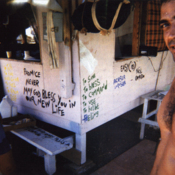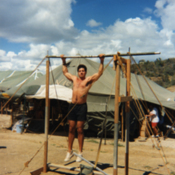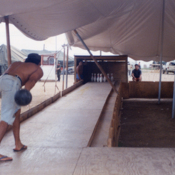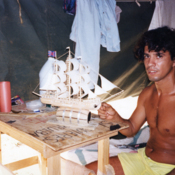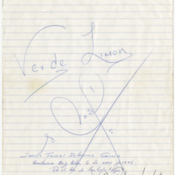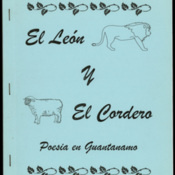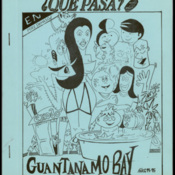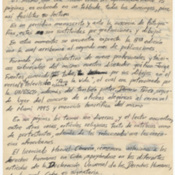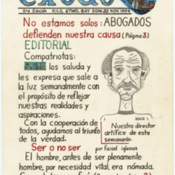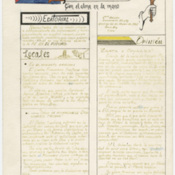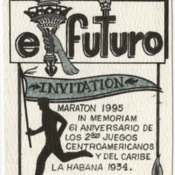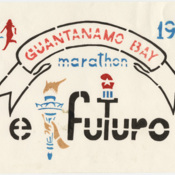Creation & Recreation
Creation and Recreation
“We survive through our imagination. To us, [creativity is] a relief, a necessity.”
– Luis, Cuban rafter age 30
The Cuban rafters at Guantánamo sought refuge from the stress of their uncertain existence in various forms of creation and recreation. Creative expression included art in all its media; writing short stories, dramas, and poetry; musical performances using handmade instruments; journalistic endeavors including reporting for the base newspapers and media in the U.S.; constructing furniture out of boxes, cots, and other materials; and comedic relief through newspaper cartoons, comic books, and even camp comedians.
Recreation included physical fitness and exercise regimens using improvised gym machines and weights; learning English or art or taking vocational classes offered by fellow rafters; and playing sports and games, sometimes in rustically built bowling alleys or with homemade board games. Art galleries cropped up in several camps, hostingexhibitions and poetry readings.
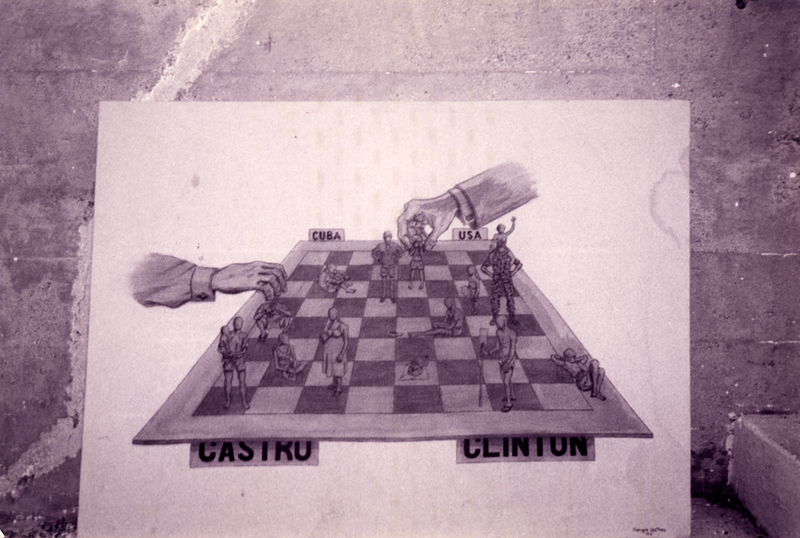
A work by artist Sergio Lastres depicts Cuban rafters as pawns in a political chess game, 1994
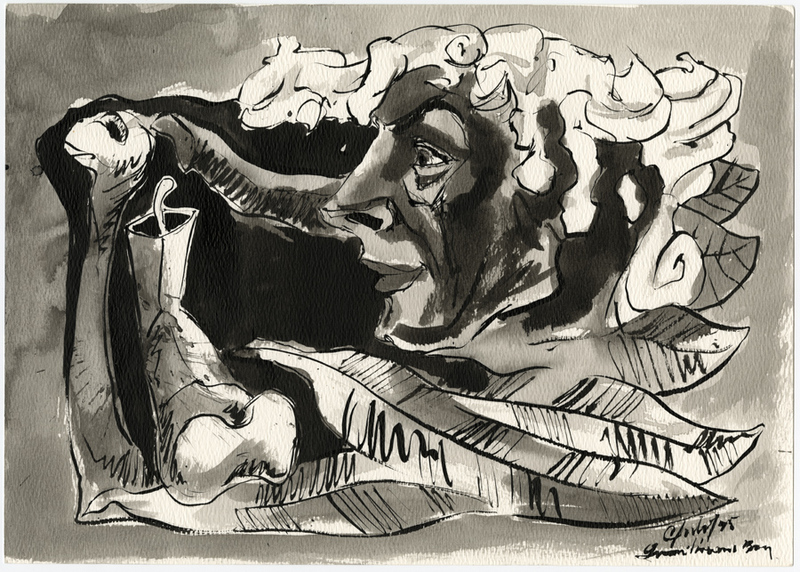
An untitled painting by Carlos Aulet, painted while at Guantanamo Bay Naval Base.
"In prosperity, art is an adornment; in adversity, a refuge."
- Motto of the Catharsis Gallery in Camp Foxtrot, U.S. Naval Base Guantánamo Bay
Cuban artist Carlos Aulet was one of the rafters living at Camp Tango in Guantánamo. While there, he created hundreds of drawings and other works on paper, depicting scenes from the camps as well as expressing the frustration, idleness, uncertainty, and hopes of the Cubans at Guantánamo. Along with other artists, Aulet taught art classes at the camps and helped organize exhibitions.
The library at Camp McCalla sponsored a poetry contest. El león y el cordero (The Lion and the Lamb) is a collection of the poems submitted to the competition. Rafter poet Danilo José Chaviano Ruiz won first place. (From the Guantánamo Base Collection. Gift of Lourdes Quirch.)
¿Qué Pasa en Guantánamo Bay? (What’s Happening in Guantánamo Bay?): A collection of the comic strip by Dámaso Ernesto Pérez Busquet published in 1995 in the base newspaper ¿Qué Pasa?. (From the Guantánamo Base Collection. Gift of Lourdes Quirch.)
While at Guantánamo, Cuban refugee David Marín reported for the rafter newspaper Éxodo and wrote articles and radio reports for Cuban exile media outlets in South Florida. He wrote this story about the arts at the Guantánamo camps for the radio program, “La Voz de la Fundación” (“The Voice of the Foundation”).
The U.S. military published ¿Que Pasa?, a newspaper for Cuban refugees at the U.S. Naval Base Guantánamo Bay. Rafters wrote for this paper but also created their own titles. The military supported these publications by copying and distributing them on behalf of the refugees. The titles included El Balsero, El Bravo, Éxodo, and El Futuro. (From the Guantánamo Base Collection)
The Éxodo newspaper was published at the Kilo and Charlie camps from November 20, 1994 to September 10, 1995. It contained news stories, literature, horoscopes, and comics. This is the original manuscript of the first issue of Éxodo. (From the Guantánamo Base Collection. Gift of Rigoberto Barroso.)
Rafters at Camp Golf published El Futuro from March 26 to September 20, 1995. The manuscript of the first issue is displayed here. El Futuro published many literary and historical articles as well as health and fitness features. On July 22, 1995, the newspaper sponsored a marathon for about 250 runners. Also displayed are the original invitation to and a sign about the marathon. (From the Guantánamo Base Collection. Gift of Jorge del Rio.)

